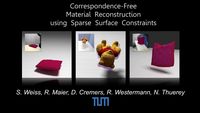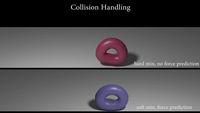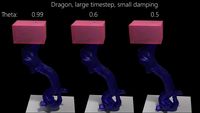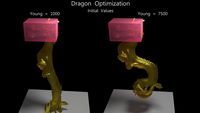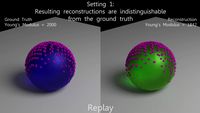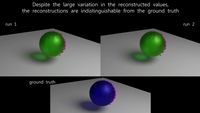Correspondence-Free Material Reconstruction using Sparse Surface Constraints
S. Weiss1, R.Maier2, D. Cremers2, R. Westermann1, N. Thuerey1
1Computer Graphics & Visualization Group, Technische Universität München, Germany
2Computer Vision Group, Technische Universität München, Germany

Abstract
We address the problem to infer physical material parameters and boundary conditions from the observed motion of a homogeneous deformable object via the solution of an inverse problem. Parameters are estimated from potentially unreliable real-world data sources such as sparse observations without correspondences. We introduce a novel Lagrangian-Eulerian optimization formulation, including a cost function that penalizes differences to observations during an optimization run. This formulation matches correspondence-free, sparse observations from a single-view depth sequence with a finite element simulation of deformable bodies. In conjunction with an efficient hexahedral discretization and a stable, implicit formulation of collisions, our method can be used in demanding situation to recover a variety of material parameters, ranging from Young's modulus and Poisson ratio to gravity and stiffness damping, and even external boundaries. In a number of tests using synthetic datasets and real-world measurements, we analyse the robustness of our approach and the convergence behavior of the numerical optimization scheme.
Associated publications
Correspondence-Free Material Reconstruction using Sparse Surface Constraints
S. Weiss, R. Maier, R. Westermann, D. Cremers, N. Thuerey
(published at CVPR 2020)
[PDF] [ArXiv Preprint] [BIB] [Source Code]
